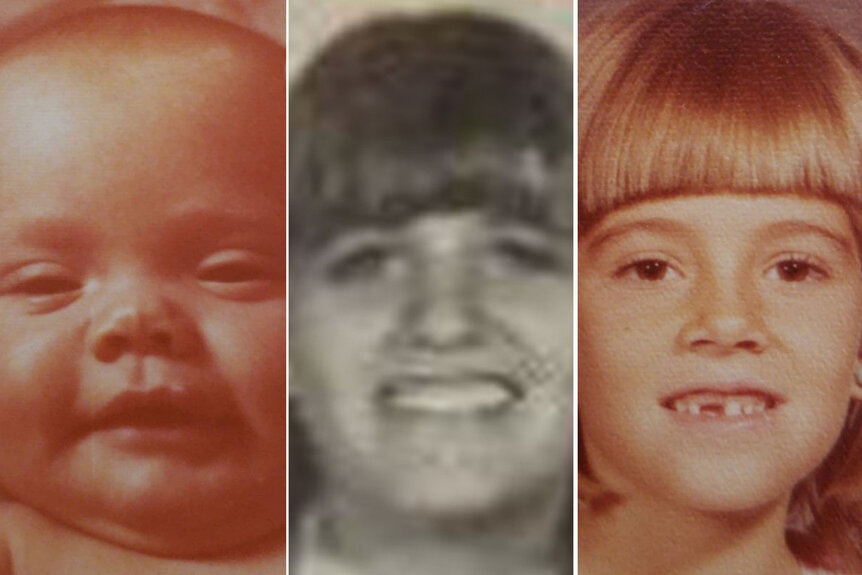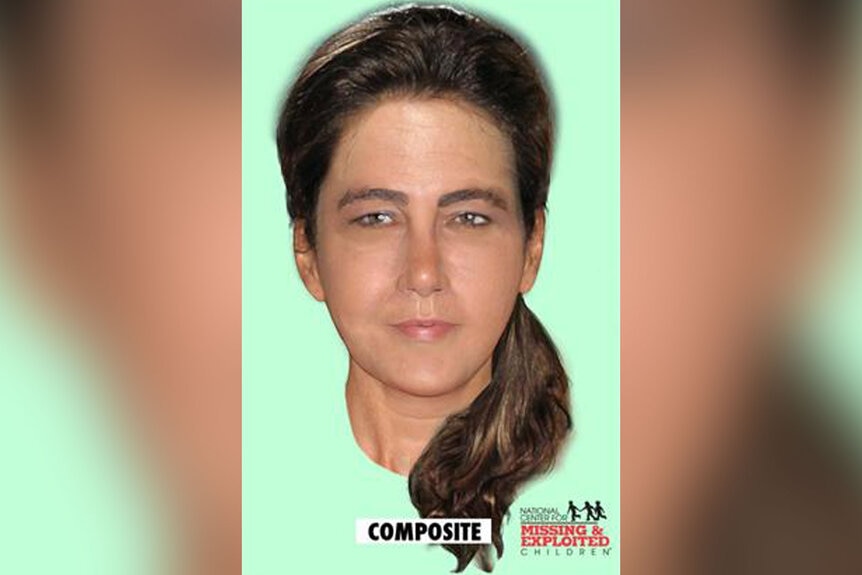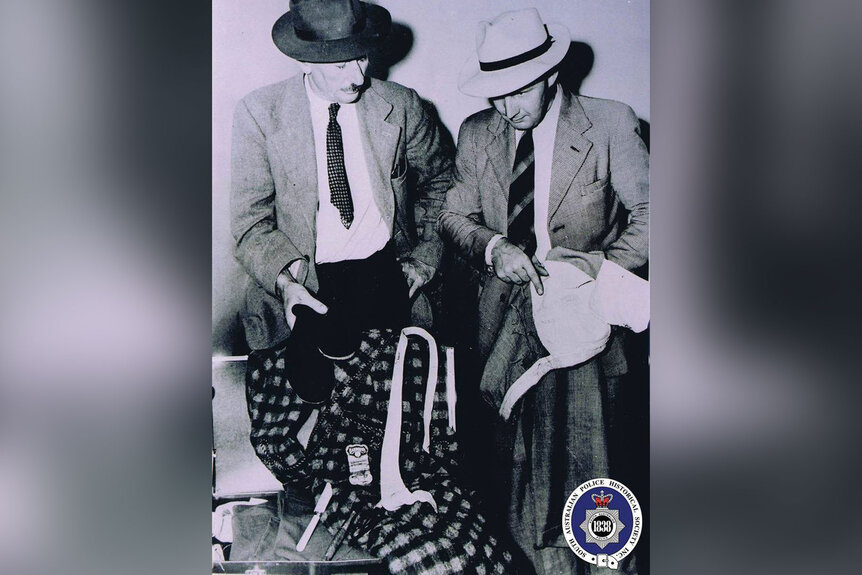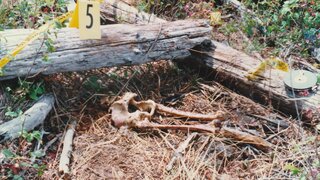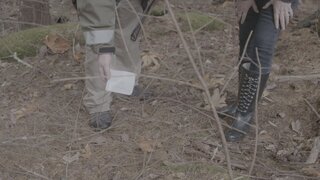Create a free profile to get unlimited access to exclusive videos, breaking news, sweepstakes, and more!
Their Bodies Made Headlines, But Their Names Were A Mystery: Famous Jane Doe Cases
A woman’s body found stuffed in a tree, a person discovered dead on the beach — these Jane and John Doe murders mystified law enforcement and the public.

There are plenty of tragic and terrifying murders each year in the United States. But perhaps even more frightening is that some victims lose their identity very identity when they die, as authorities are unable to determine who they are and allow their loved ones lay them to rest.
In Oxygen’s upcoming special “The Jane Doe Murders,” airing Sunday, January 3 at 7/6c, retired crime scene investigator Yolanda McClary is determined to name an unidentified murder victim and find her killer. But that victim is far from the only Jane Doe out there.
The terms “Jane Doe” and John Doe” are used when referring to someone whose name is unknown, like a body that cannot be identified yet, or someone who doesn’t want their name revealed, like an individual in a court case. The moniker is even used as a signature on checks featured in advertisements, The New York Times Magazine reported in 1995.
So where did the term come from? It actually first originated in old English law. In the 1200s, two witnesses were required for legal action and fake names were often used for safety reasons, according to The New York Times Magazine. In landlord-tenant disputes, the tenant was typically labeled “John Doe,” a name chosen because it was so commonplace. Over the years and centuries, it became a common term to describe an unknown person, and eventually was it used to describe unidentified bodies. “Jane Doe” sprung up as the female counterpart.
RELATED: Skeletal Remains Found By Hunters In 1985 ID’d As Missing Houston Teen
Sadly, there have been thousands of bodies marked down as a “Jane” or “John” in the past, and while many would eventually be identified, plenty more would have their names lost forever to history. However, some cases have been so unusual, whether it’s the way they died or where they were found, that despite their lack of identity, their stories have become famous. Here are some of history's most famous unidentified bodies:
1. Bella In The Wych Elm
This particular Jane Doe got a different moniker — Bella — after graffiti referencing her strange death started appearing.
The woman was found dead, cloth stuffed inside her mouth, inside a hollowed-out Wych Elm tree in Worcestershire, England in 1943 by a group of boys, the BBC reported in 2015. Police were baffled, and the public was captivated, especially after the strange graffiti, "Who put Luebella in the Wych elm?" started showing up, inspiring the nickname “Bella” for the body.
Theories abounded — that she was a sex worker, that she was one of the Romani people. One woman told police she hosted a lodger who bragged about putting a woman in a tree, while a newspaper received a letter saying she was killed by German spies. But nothing came of these leads, the outlet reported.
Bella’s remains were once kept at Birmingham University, but have since disappeared for reasons, police said, that are unknown.
2. The Bear Brook Victims
While three of these Jane Does were identified in the past two years, it took decades to uncover who they were. The disturbing case garnered significant media attention, even spawning the popular “Bear Brook” podcast.
In November 1985, a hunter made a horrifying discovery in New Hampshire’s Bear Brook State Park: A barrel with two decomposing bodies inside. One was a female in her 20s or 30s, the other a young girl. The investigation went nowhere until 15 years later when another barrel with two bodies inside was found in the park. That barrel had two very young girls inside, one about 2-4 years old and the other about 1-3 years old.
The gruesome discoveries in the state park rattled authorities and the public alike, but despite the national headlines, no one came forward to identify any of the four victims.
However, a new DNA testing breakthrough allowed authorities to finally give three of the victims their names back — and likely name their murderer as well. Using a new technique that allows scientists to recover small DNA samples from hair shafts, in 2019 the three were identified as 24-year-old Marlyse Elizabeth Honeychurch and her two daughters, 6-year-old Marie Elizabeth Vaughn and 1-year-old Sarah Lynn McWaters.
Once they were identified, they were able to connect the dead women to serial killer Terry Rasmussen, who died in prison in 2010. The fourth body has not been identified, but police do know she is Rasmussen’s daughter.
3. El Dorado Jane Doe
In the case of this Jane Doe, authorities knew how and where she died. They knew who her killer was. They knew what she looked like and spoke to several of her friends and acquaintances — but still, they had no idea who she actually was.
The El Dorado Jane Doe was shot to death at the Whitehall Motel in El Dorado, Arkansas. On July 10, 1991. Her killer was James “Ice” McAlphin, with whom she had a sexual relationship and who also allegedly acted as her pimp, HuffPost reported in 2019. He pleaded guilty to second-degree murder and spent nearly 15 years in prison.
This Jane Doe’s friends and acquaintances all gave police different names, saying she went by the alias “Mercedes,” as well as “Cheryl,” “Shannon,” and “Kelly.” She was a sex worker and exotic dancer who worked in various places in the South. Nobody knew her birth identity, and she gave different friends different stories: To some, she claimed to be in the Mafia, to others she said she was wanted for bank robbery, and to a few, she even said she was a mother of two, according to the outlet.
A recent break in the case came in 2019 when her DNA was shared with genomics and genealogy website GEDmatch, which turned up a hit. Police were able to track down her relatives and get one step closer to uncovering her true identity.
“I was really shocked,” Christina Tilford, the Jane Doe’s relative, told HuffPost. “I didn’t expect something like this to come from my DNA test.
4. Lady Of The Dunes
The horrifying murder of the “Lady Of The Dunes” continues to haunt Cape Cod to this day, 45 years after her death.
This Jane Doe’s body was found on July 26, 1974, by a teen walking her dog near Race Point in Cape Cod. It was a gruesome sight: The killer had gone to great lengths to make the woman unidentifiable, cutting off her hands, removing some of her teeth, and almost entirely slicing her head off, CapeCod.com reported in 2019. Police believed she had been dead for about a week and a half to three weeks. Despite having a basic sense of what she looked like (red hair, average height), they were stumped. She was buried in St. Peter’s Cemetery in Provincetown.
However, she wasn’t eternally laid to rest, as she was exhumed in 1980 in an attempt to gain new information, and then again in 2000. None of the exhumations yielded new hints. However, in April 2019, authorities stated they would use DNA testing techniques to try to finally identify the Lady Of the Dunes, the Telegram reported at the time.
5. Tamám Shud
In one of the strangest cases of all time, a well-dressed man was found dead on the beach of Adelaide, Australia in December 1948. He had no identification on him, and all the labels had been clipped away from his clothes. There was no obvious sign of why he had simply dropped dead with a half-smoked cigarette in hand, Smithsonian Magazine reported in 2011. No one came forward to say they knew the man.
Even stranger, when an autopsy was done, there seemed to be no indication of why he died. The coroner suspected poison — his spleen was about three times the normal size, there was blood in his stomach, and his liver was congested with blood. But there were no traces of poison found in his system.
“I was astounded that he found nothing,” pathologist John Dwyer said at the time, after an expert chemist performed repeated tests on the man’s blood and organs, according to Smithsonian Magazine.
Sir Cedric Stanton Hicks, a renowned professor, suggested it was likely a very rare poison, one that decomposed rapidly after death, had been used: digitalis or strophanthin. However, they could not be sure, and they still had no idea who this man was. Detectives searched all over and did eventually find a suitcase at the main railway station believed to have belonged to him, but there were no personal effects inside.
A break soon came, but it was the most bizarre find of all in the case. A tiny, rolled-up note was eventually found inside the man’s trousers. All that was typed upon it was the phrase “Tamám Shud.” This phrase was traced to the popular Persian book of poetry, “Rubaiyat of Omar Khayyam.” It was the last phrase in English translations and means, “It Ended.” Police never found the copy of the book the phrase was torn from – and they never identified their mysterious stranger, either.
To find out if Yolanda McClary is able to crack the case of her Jane Doe, watch “The Jane Doe Murders,” airing on January 3 at 7/6c on Oxygen.

